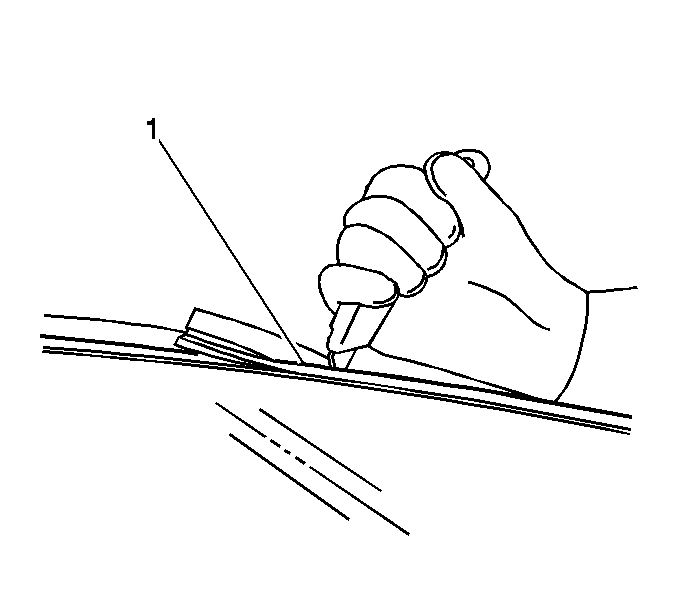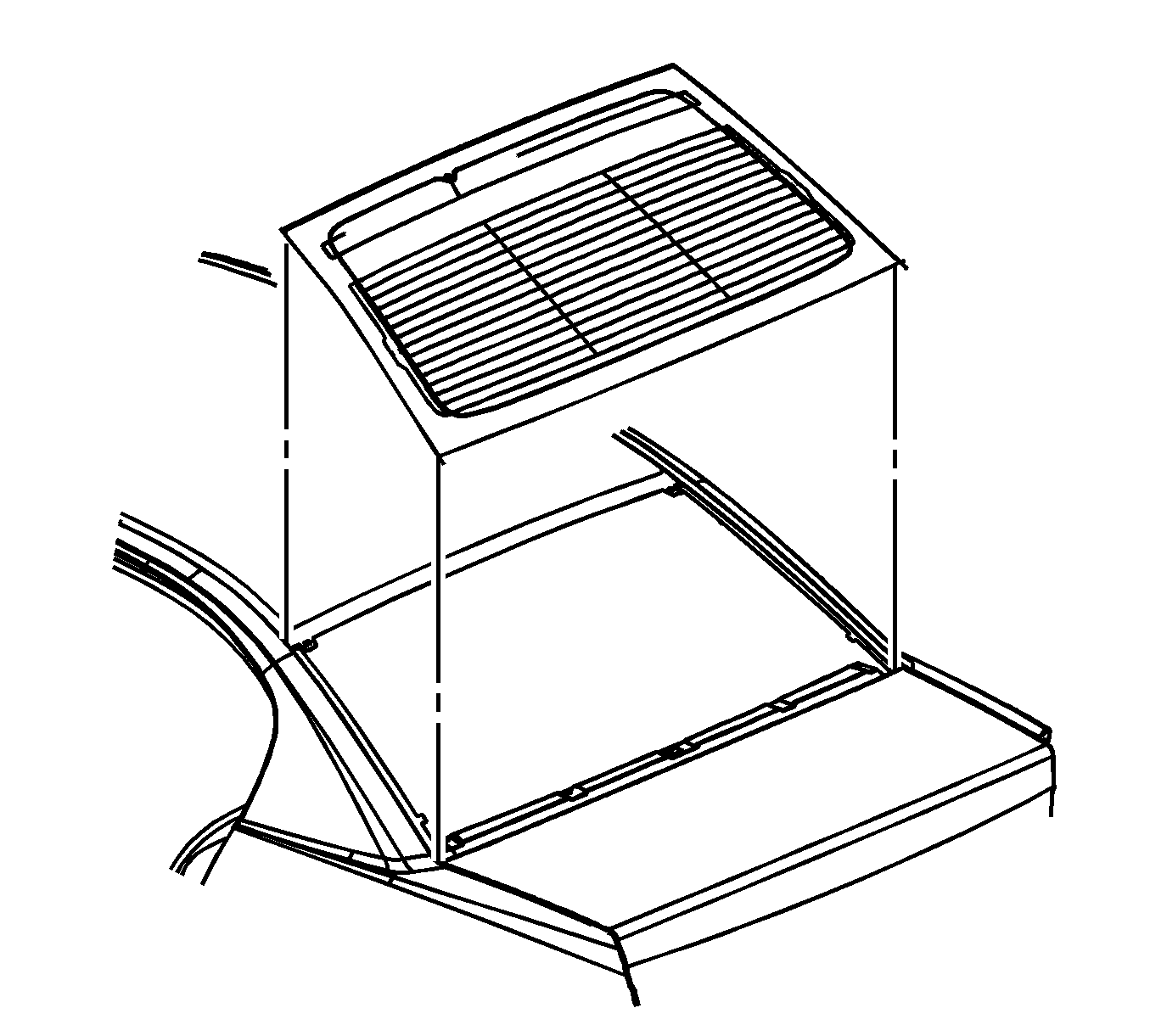Special Tools
| • | J 24402-A
Glass Sealant (Cold Knife) Remover |
| • | J 39032
Stationary Glass Removal Tool |
| • | Urethane Adhesive Kit GM P/N 12346392 or Equivalent |
| • | Isopropyl Alcohol or Equivalent |
| • | Cartridge-Type Caulking Gun |
| • | Commercial-Type Utility Knife |
Removal Procedure
Caution: Refer to Cracked Window Caution in the Preface section.
- Remove the rear upper garnish moldings. Refer to
Body Rear Corner Upper Garnish Molding Replacement
.
- Disconnect the rear window radio antenna connector.
- Disconnect the electrical connectors from the rear window defogger bus bars.
Caution: Refer to Glass and Sheet Metal Handling Caution in the Preface section.
Important: Before cutting out a stationary window, apply a double layer of masking tape around the perimeter of the painted surfaces and inner trim.

- Using a utility knife, carefully cut the exposed reveal moldings from around the perimeter of the rear window to access the urethane adhesive bead.
- If the original window is being reused, replace the window reveal moldings.
Caution: Refer to Defroster Outlet Caution in the Preface section.
- Cover the following parts to protect from the broken glass:
| • | Defroster outlets and A/C outlets |

Important: Keep the cutting edge of the tool against the window.
- Remove the window from the urethane adhesive.
| • | Leave a base of urethane approximately 2 mm (0.078 in) on the pinch-weld flange. |
| • | The only suitable lubrication is clear water. |

- With the aid of an assistant, remove the window from the vehicle.
Installation Procedure
- Install the rear window into the opening. Refer to
Adhesive Installation of Stationary Windows
.
- Connect the rear window radio antenna connector.
- Connect the rear window defogger electrical connectors to the bus bars.
- Install the rear upper garnish moldings. Refer to
Body Rear Corner Upper Garnish Molding Replacement
.
- Remove the double layer of masking tape around the perimeter of the painted surfaces and the interior trim.



